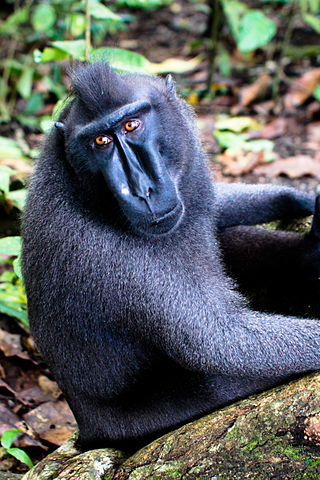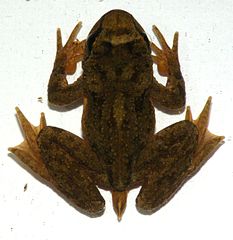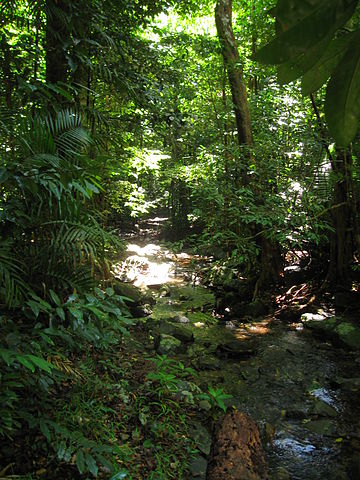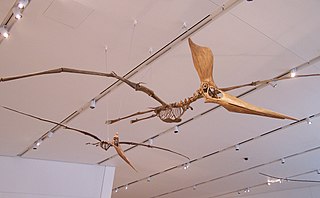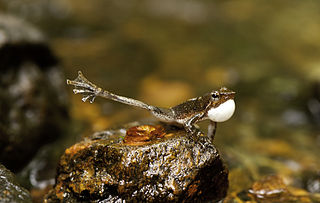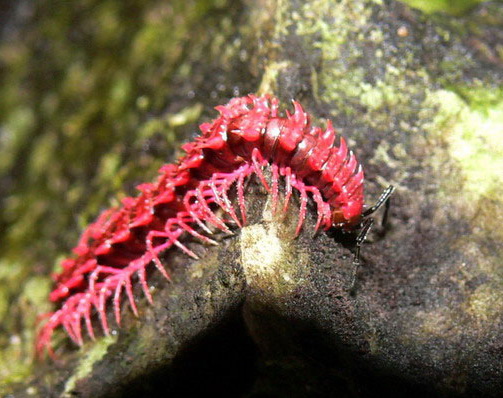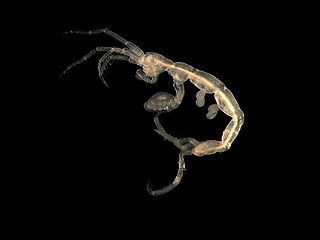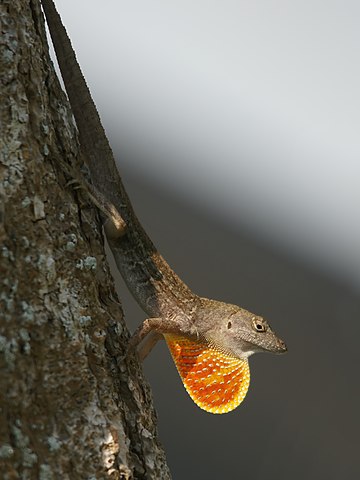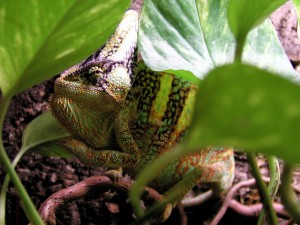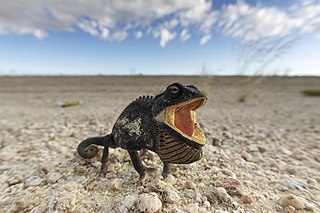While working at the Bronx Zoo, I had the good fortune to breed Kihansi Spray Toads – an endangered species that gives birth to fully-formed toadlets – and the amazing skin-brooding Surinam Toad. Yet these are but two examples of the amazing diversity of odd frog breeding strategies, none of which resemble what might be called “normal” frog behavior! Among the world’s 6,400+ frog species, we find tadpoles that eat bark, their mother’s eggs and even their father’s skin, along with parents that carry eggs or young in skin pouches, vocal sacs and even stomachs. None, however, were known to give birth to live tadpoles. As you’ll see below, a herpetologist’s extremely lucky catch, at just the right moment, changed that recently – one can only guess at what will come next!
Strange Frog in a Strange Land
The Indonesian island of Sulawesi, located between Borneo and the Philippines, is home to some of the world’s most unique and (to most of us) unexpected animals. From invertebrates to mammals, the island’s fauna is “rule-breaking” and astonishing (take a look at the Sulawesi Black “Ape”, pictured here). So the UC Berkeley biologists working there recently were well-used to surprises. But when a herpetologist grabbed at a frog and came up with a handful of tadpoles as well, he knew that new ground had been broken.
Fanged Frogs
The frog in question, Limnonectes larvaepartus, had been collected before, but has only now been recognized as a new species. Endemic to Sulawesi, it belongs to a little-studied group known as the Fanged Frogs. Armed with sharp bones that project from the lower jaw (similar to the odontoids borne by Horned Frogs and African Bullfrogs), male Fanged Frogs battle one another, presumably for mates and territory.
Internal Fertilization and Live Birth
But where Limnonectes larvaepartus is concerned, peculiar dentition is only the beginning of the story. Following the timely capture of a female in the process of giving birth, it was determined that this new species also employs a new (to us, anyway!) form of reproduction. It is the only frog known to produce live tadpoles rather than eggs or small frogs. What’s more, fertilization is internal – a strategy used by only 8-10 of the world’s 6,455 frog species (including the USA’s Pacific and the Rocky Mountain Tailed Frogs; please see photo). The new species is described in the journal PLOS One (12-31-14, Iskander et al; see link below).
This discovery may help herpetologists to understand the evolution of the amazing diversity of Fanged Frogs on Sulawesi and elsewhere in Southeast Asia. Many more than the currently described 62 species are expected to be found, and as with all creatures on Sulawesi, they likely hold wonderful surprises for us.
Natural History of the New Species
We know very little about Limnonectes larvaepartus. There is some speculation that males may guard the tadpoles, but this remains to be confirmed. Females seem to rely upon small forest pools in which to deposit their tadpoles. This may be an attempt to reduce the threat of predation by larger relatives that inhabit nearby streams, but further research is needed.
Learning More About Amphibian Breeding Strategies
I can’t seem to stop writing about the amazing breeding strategies of frogs, caecilians and salamanders. Please see the articles below for more on wood-eating tadpoles and others. The article first describing Limnonectes larvaepartus is also linked.
Tree-Dwelling Tadpoles that Feed Upon Bark
Novel Reproductive Mode in a New Species of Fanged Frog
 That Reptile Blog – Reptile, Amphibian and Exotic Pet Care and Information
That Reptile Blog – Reptile, Amphibian and Exotic Pet Care and Information


